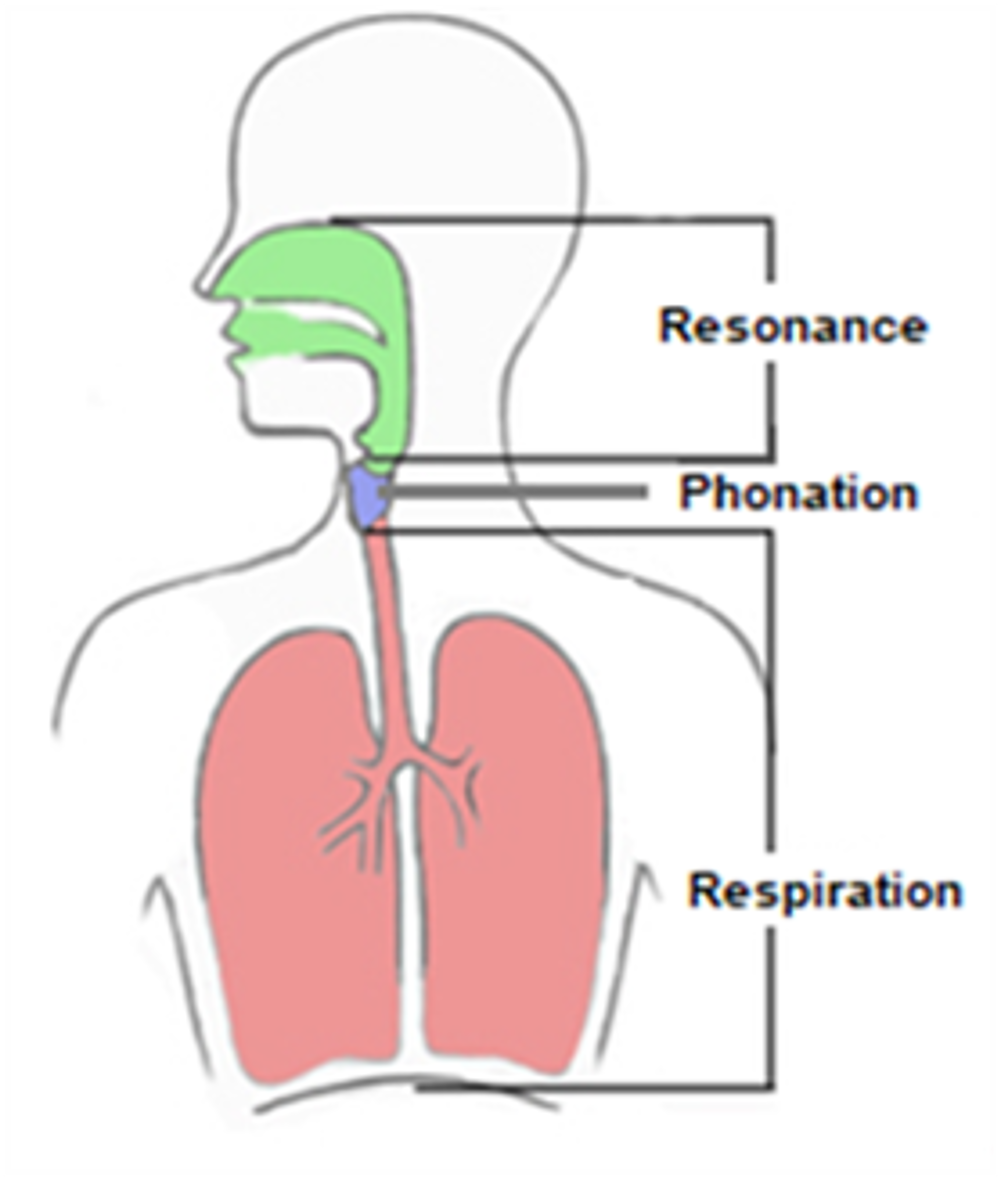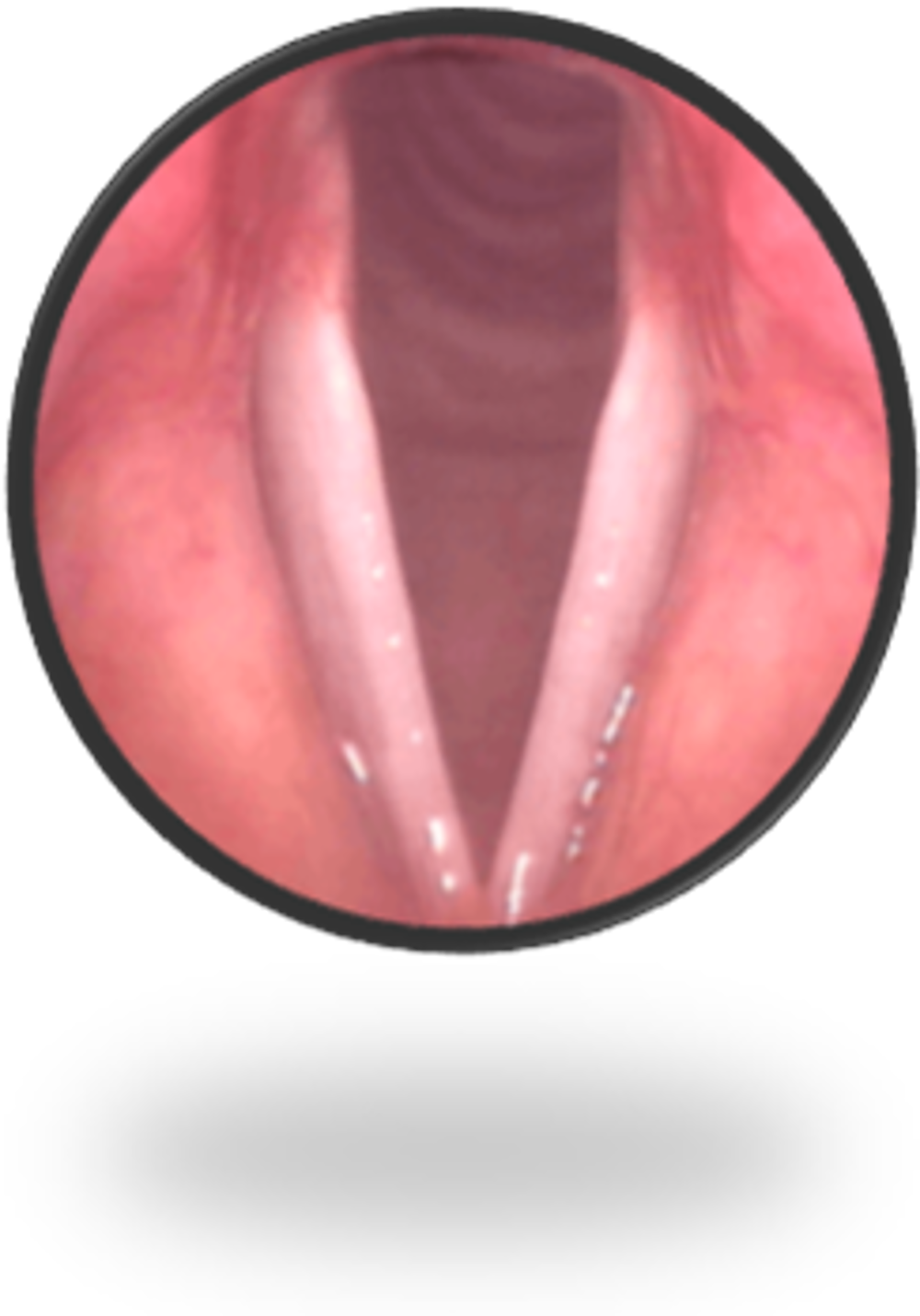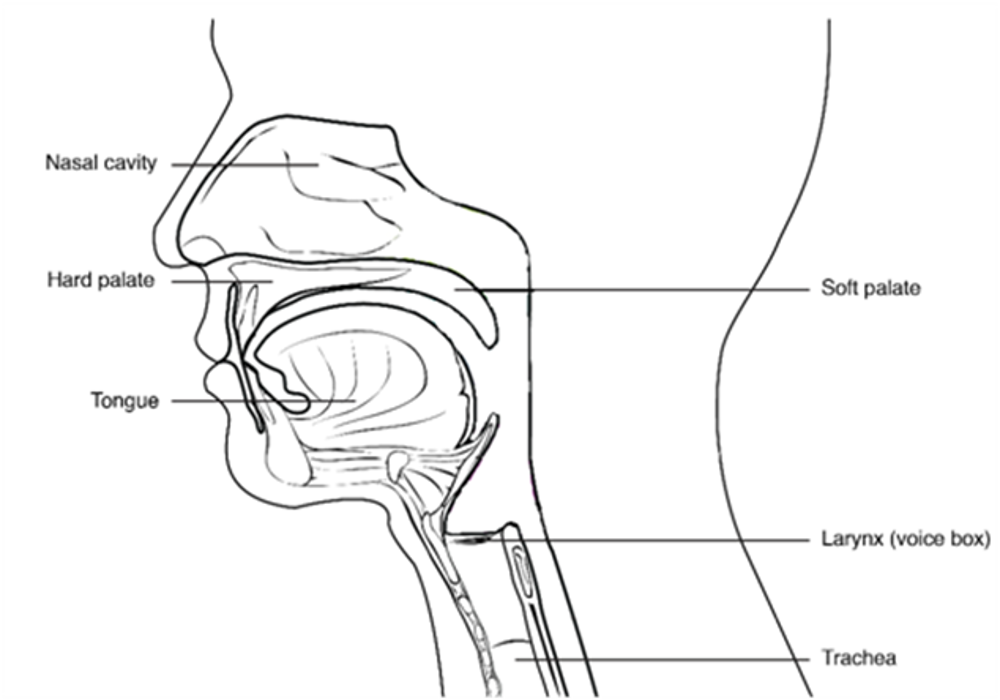How your voice works
This section provides you with a simple overview of voice production. It is important to have an understanding of how your voice works before attempting any voice change. This is because you need to know how your voice is working currently so you can make healthy and safe changes to aspects of it.
How does your voice work?
Have you ever thought about how your voice works? When we speak, air from our lungs passes through our voice box (larynx) and is shaped by the spaces above, in our throat, mouth and nose. The vibration of air in these spaces contributes to your unique sound.
Voice production can be separated into three main parts:
- Breathing (respiration)
- Vibration of the vocal cords (phonation, including pitch)
- Shaping the sound of your voice (resonance)
You may notice that a small change in how you say something can make a big difference to how your voice sounds, moving you closer to achieving your authentic voice.
Breathing (respiration)
Breathing is the foundation for voice production – you cannot produce voice without air.
As we breathe in, we fill our lungs with air. This air is then moved up the windpipe (trachea) to the voice box (larynx).

Diagram of the upper body, showing the three subsystems of voice production.
Vibration of the vocal cords (phonation)
In preparation for voice production, the vocal cords come together. The air from the lungs is then pushed through the vocal cords and this causes the vocal cords to vibrate. This rapid vibration makes a sound, like when you let the air out of the neck of a balloon, or when you blow on a blade of grass.
When you run out of breath, your vocal cords open back up and allow you to breathe in again.

Diagram of the vocal cords when someone is talking.

Diagram of the vocal cords when someone is breathing.
Pitch
The size and shape of your vocal cords determines the pitch of your voice (how high or low your voice is perceived to be.)
Everyone has a natural speaking pitch. Pitch is often linked with gender and can be an important part of achieving a voice that you feel represents you.
Changing pitch should not be done in isolation. The vocal cords produce voice but this sound must be shaped, at the level of the vocal cords and in the surrounding areas. Pitch and resonance go hand-in-hand and should be worked on together.
Shaping the sound of your voice (resonance)
The vibration of your vocal cords generates sound, and this sound travels up towards the throat, mouth, and nose. These structures then alter and change the sound.
The sound echoes and bounces off structures in the throat, mouth and nose. This is what makes your voice recognisably ‘you’.
Small changes such as where you place your tongue, or how rounded your lips are, can make a big difference to the sound produced.

Diagram of resonance
Learn more about what your voice can do in our Exploring what your voice can do section.